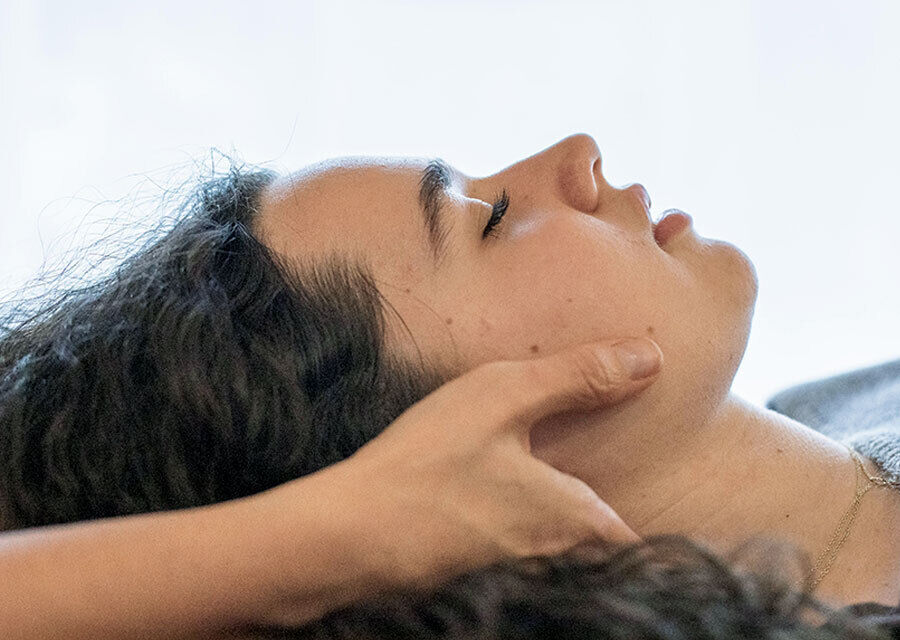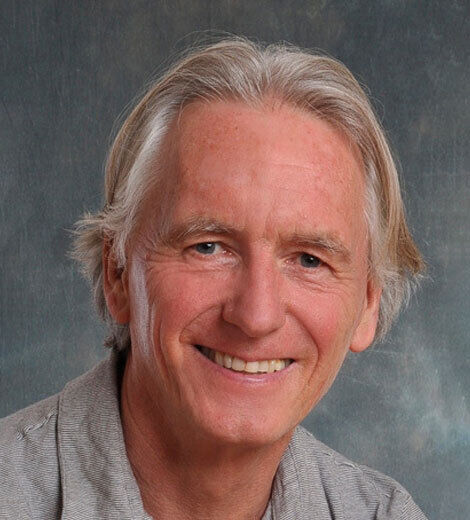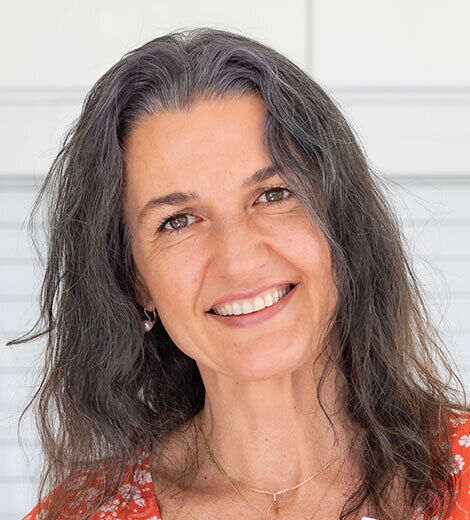Stay updated! Sign up for our newsletter!

About the training
Craniosacral Resonance listens to subtle inherent rhythms within the human body as expressions of health.
The training is grounded in a solid knowledge of anatomy, physiology, embryology and modern neuro-biological and developmental findings as well as a deeper understanding of the nature of health.
Participants develop and refine their ability to perceive through their hands and heart the different levels of functions within the human body all anchored in a profound inner stillness.
Participants also learn to refine their skills to form neutral, grounded, spacious, thoughtful and empathic therapeutic relationships as the key to deeper levels of processing.
Who Is the training for?
The training is open for anyone who is interested in craniosacral resonance and the biodynamic approach to address health and healing.
Who may benefit from the training?
- Those who have previously been involved with other forms of craniosacral therapy and would like to expand their knowledge and experience
- Those who would like to learn new methods to support themselves and others
- Those who already work with other people in various settings (masseurs, psychotherapists, doctors, social workers, physiotherapists, psychiatrists, etc.)
- Those interested in self-exploration who wish to dive deeper into the exploration of the connection between body, mind and spirit
- Those who wish to discover deeper ways of connecting with loved ones (partners, children, friends, etc.)
- Those who simply wish to experience a state of deep relaxation, peace and serenity
We have educated more than 400 craniosacral therapists both in Slovenia and abroad.
The training is organized around two fundamental teaching approaches.
1. Teaching and practice
Teaching is dedicated to gaining a deeper knowledge of all fields connected to the understanding of craniosacral resonance and to have a direct experience of the teaching through hands-on practice.
It includes:
- Lectures which include a practical introduction to this approach as well as teaching in anatomy, physiology and embryology
- presentations including hands-on demonstrations
- hands-on practice
- answers to questions that may arise during the program
- practice of interpersonal therapy with the help of the teacher,
- guided movement and meditation for a deepening awareness of our own bodies as well as of the perception of others
- Reciprocal practical exercises of therapies with the teacher’s support
- Exploration and sharing of personal experience in small groups.
The training includes 180 hours in the group room. It is conducted in English with an interpreter.
2. Exercises and independent study between modules
In craniosacral resonance, it is fundamental to have a direct experience of the inherent health within and its different expressions. Self-education and hands-on practice are very important.
Every student is required to complete the following between modules:
- Give 50 documented sessions free of charge
- Give and receive 15 tsessions from the other students which can be part of the 50 documented sessions mentioned above.
- Give four tutorial sessions to the trainers who then provide feedback
- Receive 10 sessions from the trainers.
- Assigned home work
Exercises include 100 hours outside the group room.
3. Training modules
Module I:
- History and evolution of the biodynamic approach
- Establishing a safe holding environment
- Generating a neutral, receptive listening field
- Exploring resources as a door into a settled quality of presence
- Deepening into a being to being relational field
- Opening to a sense of wholeness and health
- Orienting to Primary Respiration and its different expressions
- Exploring the concept of the midline as an organizing principle
Module II:
- Orienting to organizing forces and holding patterns
- Supporting healing intentions as they emerge
- Orienting to stillness at the core of healing processes
- Orienting to stillness processes as a resource CV4
- Exploring the reciprocal tension membranes as a core structure
- Orienting to the tissue field and its motility
- Exploring diaphragms and spine dynamics
- Clarifying verbal skills
Module III:
- Reviewing the healing principles
- Exploring the pelvic area and the chakra system
- Exploring the nervous system and the stress response
- Introduction into shock and developmental trauma
- Orientating to the long tide
- Exploring occiput/atlas/axis dynamics
- Exploring cranial organization and motility
Module IV:
- Exploring cranial base patterns
- Exploring early patterns of experiences and birth dynamics
- Clarifying the functions of the cranial nerves
- Orienting to stillness processes as a resource EV4
- Deepening into long tide expressions and dynamic stillness
- Orienting to ignition processes
Module V:
- Orienting to mandibular dynamics: TMJ, temporal bones and hyoid
- Exploring the polyvagal theory and the social engagement system
- Orienting to the face and facial dynamics
- Orienting to cranio-pelvic resonance
- Exploring the eye orbits and their dynamics
- Clarifying how to present Craniosacral Resonance in a simple way
- Integration and completion
About Craniosacral Resonance
Craniosacral resonance is based on the “breath of life” concept. The breath of life is a universal creative principle which sustains and connects all life functions within all living organisms, including humans.
An experienced craniosacral practitioner feels the expression of the breath of life as slow, rhythmic motion, similar to the tide. With a gentle, tuned and specific positioning of the hands, the practitioner listens to and supports the forces of the breath of life in their different expressions, thus enabling the body to access its own self-healing and regenerative resources.
The origins of craniosacral resonance are the realizations and experience of Dr. William Garner Sutherland, an American osteopath.
What is this modality based on?
Craniosacral resonance is based on the experience and understanding of Dr. William Garner Sutherland, an American osteopath. In the last decades, Rollin E. Becker, James S. Jealous, Franklyn Sills and others contributed to a deepening of Sutherland’s understanding, which eventually lead to the development of the biodynamic approach to craniosacral therapy. In their works, these osteopaths recognize the holistic nature of the human body and the deeper expressions of health.
Craniosacral resonance is a biodynamic approach to craniosacral therapy that was developed by Chintan Veet as an expression of his life journey and meditation experience.
What is this modality intention?
The intention of Craniosacral Resonance is to facilitate a clearer expression of the forces of the breath of life, an expression of our inherent health. With a gentle, tuned and specific positioning of the hands, the practitioner listens to and supports these forces thus enabling the body to access its own healing resources.
During treatment, the client feels a deep sense of relaxation, serenity, tranquility and peace, which is vitalizing and regenerative.
In Center Hočevar, our biodynamic craniosacral practice is based on Craniosacral Resonance developed by Chintan Veet.
The Effects and Use of Craniosacral Resonance
Craniosacral resonance has a positive effect on the physical, emotional and mental levels.
It supports structural changes in the body. It leads to the relaxation of the body and mind and promotes well-being and vitality. It is effective in pain relief and different physical conditions as well as in both acute and chronic diseases. It offers a supportive frame when faced with emotional or psychological challenges, in moments of life crises, grief or loss and in times of transition or periods of self-discovery and growth.
Apply for Training
Craniosacral resonance is still a relatively new field in Slovenia. We are pleased you have decided to deepen your knowledge about how a human body works and become one of the experts who helps others with their skills. We guarantee a high-quality education and a deep practical preparation in the fields of the biodynamic approach to treatment and craniosacral resonance.
We guarantee a high-quality education and a deep practical preparation in the fields of the biodynamic approach to treatment and craniosacral resonance.
End of Training Certification
After you finish training, you will acquire the title of Craniosacral Resonance Therapist. This title is certification that you are suitably qualified in accordance with the professional requirements of Ran Silentium under the supervision of Chintan Veet, international teacher of craniosacral resonance.
Language
English with Slovenian translation.
Teachers

Chintan Vacheron
Chintan Vacheron RCST®️ (BCTA/NA) has been involved with various forms of craniosacral therapy as practitioner and teacher for over 25 years.
It all started in1992 with his first training in bodywork. Very quickly he became an accomplished practitioner and teacher of Rebalancing®️, a form of deep tissue bodywork. This solid understanding of the human structure, and a continued interest and fascination with the mystery of the human form led him to craniosacral therapy in 1996. This new modality brought a different understanding and wider dimension to his work.
In 2002, a formal training in the biodynamic approach to craniosacral therapy eventually contributed to form the basic frame for his actual practice and teaching. It was named Craniosacral Resonance as a reflection of his life journey and meditation practice.
Chintan Vacheron is teaching in different parts of Europe and Taiwan.

Karima Valentina Hočevar
Karima Valentina Hočevar is a graduate of the School of Economics and Business at the University of Ljubljana with a major in Human Resources Management. She is a certified therapist for various approaches: Craniosacral Resonance, the NeuroAffective Relational Model, Somatic Experiencing, Integral Somatic Psychology and Learning Love. She is also a dance yoga teacher.
In the field of Craniosacral Resonance she has been (co-)leading trainings and seminars in Slovenia and abroad since 2011. In the NeuroAffective Relational Model she has been part of a team of teachers and supervisor for trainings in many European countries since 2015.
Course schedule
-
Module I
5th-9th February 2025
-
Module II
4th-8th June 2025
-
Module III
10th-14th December 2025
-
Module IV
18th - 22nd February 2026
-
Module V
27th - 31st May 2026
Each module begins at 10 a.m. on the first day. Please come at 9.00 a.m. at the latest, because of the registration.
Venue
Ljubljana
Price
-
Registration fee*
500 € Payable one month before the start date.
-
1st to 3rd instalment
3x 1.000 € Payable no later than 10 days before the first day of classes of the first three modules.
-
entire training
3.500 € The price includes the registration fee and covers payment for 5 modules, which can be paid in 3 instalments.
* The registration fee is a non-refundable initial fee that covers the costs of recruiting participants and at the same time constitutes a commitment that the place reserved by the participant will be used by the participant.